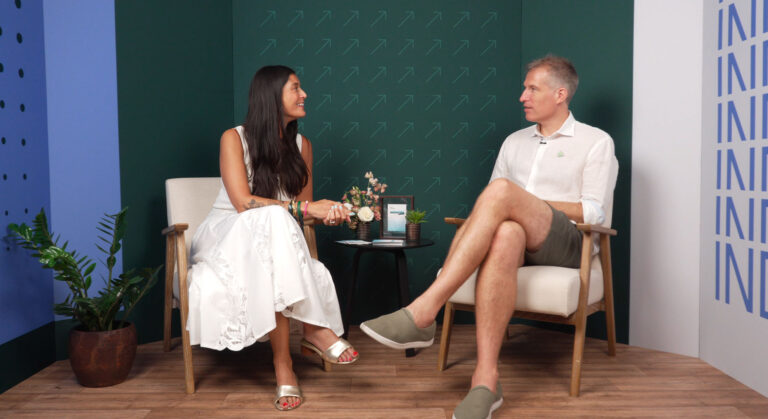There was much cause for optimism at this year’s VideoWeek New Video Frontiers, with significant excitement around CTV’s growth prospects and the amazing innovation powering it. But that global expansion, and in particular the growth of US subscription video-on-demand (SVOD) providers, endangers the continued prominence of UK broadcasters.
UK broadcasters play a vital role in shaping British culture, but haven’t grown at the same pace as international companies in our increasingly digital TV landscape. According to Ofcom, SVOD viewing almost doubled during the pandemic, with a daily 47-minute increase per person. Comparatively, UK broadcast video-on-demand (BVOD) viewing increased by only 12 minutes.
Since then, however, the SVOD market has faced new pressure as UK viewers seek to trim their subscriptions as a result of cost-of-living rises and a decline in disposable income..This presents a huge opportunity for ad-supported models for our local providers, to provide more value and freedom to cash-strapped consumers during the economic downturn.
In order to stay competitive, UK broadcasters must focus on digital growth through connected TV (CTV) offerings. Key challenges to achieving this scale remain. But as the industry collaborates to solve them, a more standardised and automated CTV supply chain will revolutionise UK television.
Current CTV issues limit scale
The digital transformation of UK TV business models hasn’t happened yet, in part because of ongoing challenges preventing media buyers from running large-scale programmatic campaigns.
The CTV market is still fragmented, with its ecosystem of content providers, ad platforms, and intermediaries. This differs starkly from the highly regulated and centralised broadcaster-to-advertiser relationships that define traditional TV buying. A lack of standards makes it hard to qualify both inventory and partners and, in the process creates added work for buying teams as they plan campaigns.
The lack of standards also impacts measurement. Without universal definitions for CTV inventory, such as genre and audience type, effective campaign measurement is limited. This makes it hard for brands to measure the effectiveness of such campaigns, particularly when used in tandem with those of larger, traditional linear buying campaigns.
Indeed, the lack of effective measurement was one of the key themes at this year’s conference–as these issues ultimately restrict scale in the UK market. Magna’s December 2022 Global Ad Forecast found that the 13% increase in UK BVOD revenues predicted for 2023 won’t offset the overall 3% decline in linear ad sales.
These problems require industry-wide involvement to solve. Collaboration is crucial to fuel the innovation that will help overcome these problems—a difficult task in the segregated network of UK broadcasters.
Broadcasters: ad tech’s new walled gardens?
UK broadcasters have made significant strides in developing on-demand streaming platforms for their consumers. This includes Channel 4, which pledged to focus on youth-led content and increase digital advertising to account for 30% of all its revenue by 2025, and the recent release of the Sky Glass and ITVX platforms.
These projects are certainly ambitious. But broadcasters must share common measurement frameworks and data across different platforms in order to qualify campaigns effectively for their buying partners.
There are good intentions prompting this caution–Kelly Williams, the ITV commercial director, explained that the move towards a TV walled garden was to protect consumers. A better regulated industry, however, will better protect UK consumers while providing a more enticing buying experience for media buyers.
We saw some positive steps towards this collaboration last year–from Sky’s cross-media measurement initiative CFlight to Netflix and Disney+ joining BARB.
More needs to happen. We need industry-wide support of necessary tech upgrades like ads.cert 2.0, OpenRTB 2.6, and cryptographic protocols that will help to secure the CTV supply chain and standardise inventory signals. As we’ve seen with measurement, UK broadcasters can lead the way in implementing these changes by choosing to work with tech partners who pledge to do the same.
Bring on the programmatic transformation
Automation in CTV is ultimately needed to help CTV scale, providing media buyers the opportunity to build more versatile campaigns with different broadcasters and across multiple channels.
In my panel session, “What’s Next for the SSP,” we discussed the vital role large SSPs play in leading this transformation. SSPs help to simplify the complex and fragmented CTV ecosystem while providing environments where biddable TV inventory can be traded safely and efficiently.
We can utilise the lessons we’ve learned in the world of traditional display–such as the vital role collaboration plays in building standards and definitions–to unlock that automation in CTV.
In developing the frameworks and tech that balances addressability, effectiveness, and privacy, broadcasters will be able to benefit from the real power of CTV: a channel that combines reach with efficiency and control.
TV advertising is the most memorable form of advertising, particularly when the programming it powers matters to consumers, programming which British broadcasters specialise in. That’s a powerful value proposition, and media buyers know it. By increasing their CTV offerings, UK broadcasters can stay competitive in an increasingly global TV market.
This scale will, in the process, allow consumers to access media on their terms. That sends an important message in a recession. CTV may be a new channel in digital advertising, but its successful implementation can help to build trust with the consumer across the overall industry.
Learn how you can reach new audiences and realise the true value of CTV with Index.
Back to blog



